* (restored/expanded)
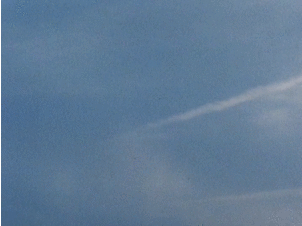
‘Employing neither psychologised stories nor non-objectivist abstractions, James Benning’s approach to narrativity does not fit within the history of narrative cinema, nor with much canonical avant-garde work, and can pose an interpretative challenge to the spectator. For the first-time viewer of any of these films, the immediate impression is of radical, almost unnerving stillness generated by the long takes from a fixed camera position. Benning’s consistent exploration of cinematic duration, his painstaking mapping out of a space over time, suggests that his work can be easily contextualised in the history of long take cinema, along with Straub-Huillet, Ophuls, Welles and others.
‘However, Benning’s work cannot be fully explained by theories of the long take as they relate to forms of narrative cinema, such as those of Bazin or Mitry, as the eschewal of narrative continuity and dramatic elements, particularly characters, militates against either the long take aesthetic (viz Bazinian realism) or the synthesis theory of montage and long take (as proposed by Mitry). However, in the narrower context of experimental filmmaking, Benning’s interest, in P. Adams Sitney’s words, in “film that insists on its shape”, invites descriptors like “structuralist” and “minimalist”, and the choice of long takes becomes part of the para-cinematic refutation of dominant cinematic codes (like the highly conventionalised notion of the post-modern audience “attention span”). Benning does not consider himself a structural filmmaker, believing he has “more to say” than those detached formalist experiments generally do, and explains this method of prolonged shots as a means to investigate place.
‘With his mathematics background, his structuralism manifests in the invocation of rigorous compositional logic – the films of the California trilogy, for example, being composed of 35 shots of 2.5 minutes length – “pose questions” and “solve problems”. Benning’s long takes therefore become understandable as an authorial strategy for the organisation of documentary materials and for interrogating the act of seeing. After several minutes of looking at a single shot, the effect on the viewer is powerful. The formal elegance of the compositions somehow becomes surreal over time, as we look into, instead of at, the place. This tendency locates Benning in the history of experimental filmmakers concerned with interrogating visual perception.
‘Benning’s landscape works, with their meticulous, reverential compositions, have been located in the history of American realist painting and photography, and also belong to the tradition of American nature writing. It is impossible to observe natural landscapes anywhere without some acknowledgement of the grim reality of human development and profiteering on wilderness, and Benning’s work is shot through with both a deep respect and love of nature, and a quiet sense of sadness at the devastation so regularly encountered. But he avoids essayism, or polemic, preferring instead critique by quotation, such as in the carefully inserted shots of ravaged landscapes, livestock and abattoir and other evidence of human despoilment that recur throughout his oeuvre. His is a restrained ecocriticism, “a certain political meaning” expressed through multivalent American symbols. Not for Benning the heroic American modernism of some of the avant-garde masters, but a different idea of wild places, less about individual expressivity and transcendentalism, and more about observation, time and consideration, no less sacred.’ — collaged
____
Stills
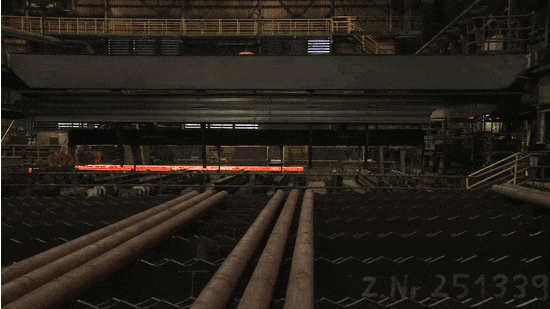



















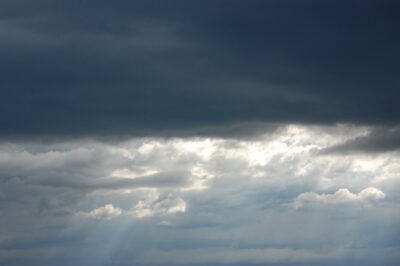



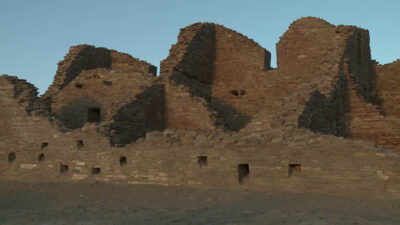


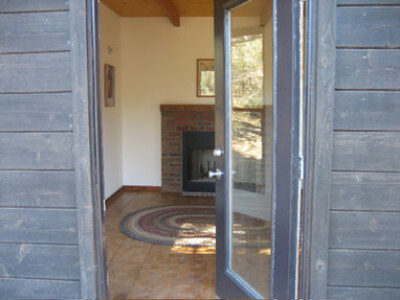

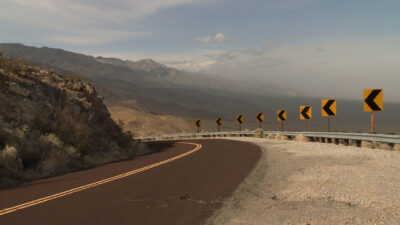

















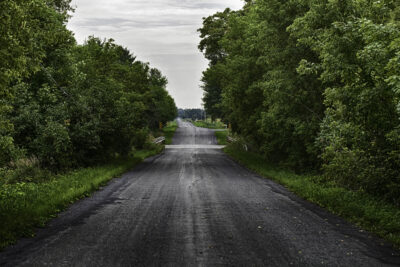
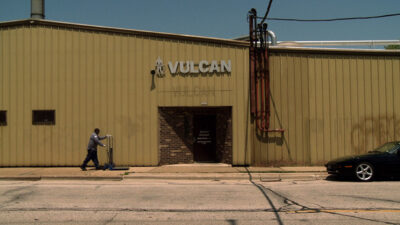



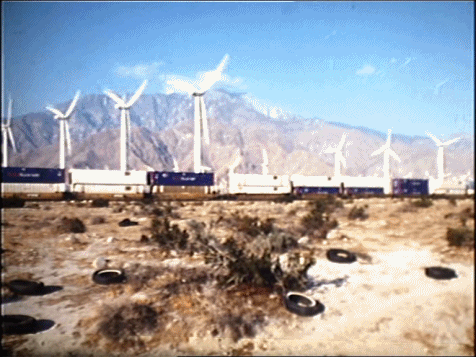




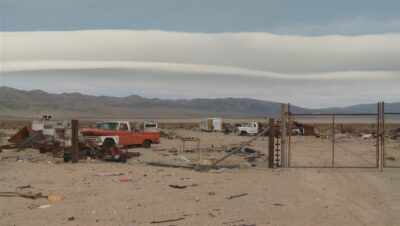
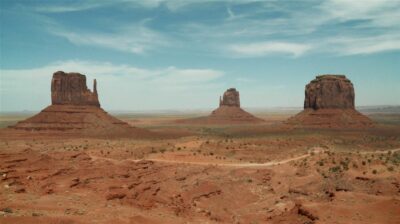





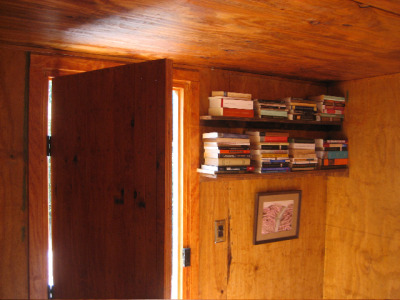
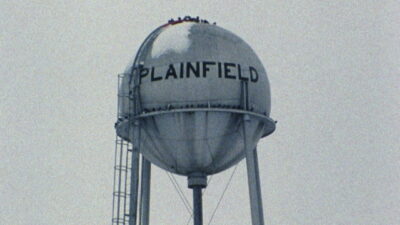



______
Further
James Benning @ IMDb
James Benning interviewed by Neil Young
‘James Benning’s Art of Landscape: Ontological, Pedagogical, Sacrilegious’
‘Crossing Paths: Jon Jost on James Benning’
‘Life in Film: James Benning’s Favorite Films’
James Benning: 500 Words @ Artforum
Jonathan Rosenbaum on Benning’s California Trilogy
Book: JB & Liam Gillick ‘Drawing With Your Eyes Closed’
James Benning’s Hit List
‘Nudging the Mind: James Benning’s 13 Lakes’
James Benning interviewed @ filmkritik
James Benning’s films @ Canyon Cinema
_____
Extras
Chantal Akerman’s homage to James Benning
James Benning driving and talking about America
James Benning: Circling the Image
MASTERCLASS – James Benning
JAMES BENNING on TIME
_______
Interview
from Senses of Cinema
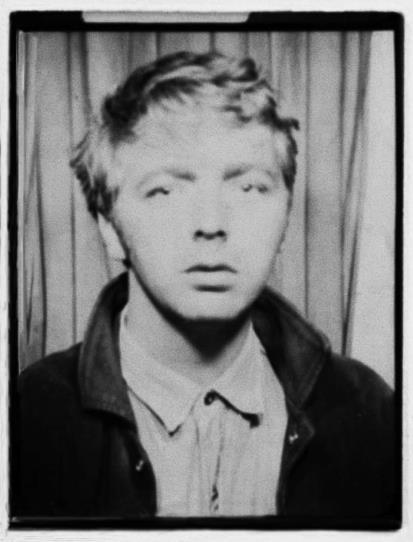
Danni Zuvela: James, there are so many words people use to describe this kind of non-commercial film work – experimental, avant-garde, underground – all terms that have different but overlapping connotations and usages.
I’d like to frame today’s conversation in terms of “artist filmmaking”, and why film seems to be among the most marginalised artforms.
James Benning: Artist filmmakers are on the margins. I mean, there’s a number who have made a career out of it but even they tend to be marginalised. Nobody’s making any money out of it. Those wh
o do become well known are often known for their theory, which helps their films become known. People like Hollis Frampton, who wrote a lot – I think that helped his work become better known.
DZ: Artist filmmakers don’t fit into the industrial film world, but then they are ignored by the art world as well.
JB: They’re in-between! It’s the non-commodity status of the work; it doesn’t have a “value” in either world. If you’re an artist in any other medium, you find a gallery and have hopes of making a decent living. A few do climb to the top of that pyramid to make a living. I’ve never really made money from my work, unless it’s an installation.
DZ: Can you talk to me a little about your approach as an artist?
JB: When I first started out I didn’t know what art was. My definition of art was drawing and painting and stuff…what I did think was art wasn’t really art at all – it was the stuff I’d seen in arts and crafts festivals. Then once I got serious with film, I realised art has this conceptual side to it, which I’d never thought about, but made sense.
Now I think of myself as an artist who happens to use film, and I approach my work as an artist solving problems. I set up problems and try to solve them in an artistic and creative way and hope to find an audience, hope that someone will find it interesting…
It may be that it’s no different for any other artist, but it seems especially difficult for film artists. I’ve been in four Whitney Biennials. A painter only has to be in two to become self-sufficient, but for a film artist, that recognition seems of little benefit. Anybody that’s interested in the arts should be interested in my films – they have the same concerns as other work in the visual arts.
DZ: Can you talk to me a little about the way audiences engage with your films, and what sort of changes you’ve noticed in audiences over the years – have they become more receptive to fine art film? When your films were first shown, was that in a context of people having seen work they could reference yours to, like Michael Snow’s and Hollis Frampton’s?
JB: Back in the ’70s those works still weren’t seen by general audiences. I think most of those early screenings took place with just a few people in the room. A few very interested people, but they weren’t huge audiences, or even big – more just a small, art crowd. I don’t think most people would have seen Snow or Warhol’s work, though they might have been aware of it. That awareness tended to come later.
Over time film audiences have become more sophisticated. They’ve been to film schools and other venues where they could see work that’s different to dominant cinema. Unfortunately those places, those venues, are drying up – many places that used to show experimental film have gone out of business, or they’ve changed to become more accessible. That’s in the US, of course – I think the audience is even larger, and growing, in Europe – in Germany, Austria, England, my work’s played to large audiences who seem very receptive to what I’m trying to do.
DZ: Why do you think that might be?
JB: Oh, I don’t know – it’s more exotic than images of their home country perhaps, or maybe there’s less attention, less drive to make narrative works than in the US.
DZ: But your work is narrative, in a way.
JB: Yes, it’s experimental narrative…it’s non-conventional, for narrative. I think it’s about patience too – Europeans seem to be more patient with films, to have more understanding of the concerns and what I’m doing. I found they’re very poetic in the way they talk about films with me, the way they describe films. In Germany I found people would actually take in details about images…if somebody notices the frost melting on the grass in one of my shots, for example, I get very excited that they’re watching so closely. I find that the people who get bored aren’t able to describe anything they’ve seen in the image, because they haven’t worked hard enough at noticing things within the film.
______________________
27 of James Benning’s 72 films
____________
Allensworth (2022)
‘Even though an intertitle describes the location of the scene of James Benning’s new film – “Allensworth, est. 1908” – during the twelve shots of around 5 minutes each that together make up a one-year cycle, we only understand where we find ourselves little by little. After the image of a solitary bare tree under a winter sky, comes a series of modest detached houses and community buildings built out of timber or sheet metal; a stable and a cemetery that no one seems to visit any more. A few cars drive by on a road hidden by banking; trains are heard arriving, sometimes crossing the frame; for the rest, life has withdrawn. Allensworth is basically a ghost town, a museum. Founded at the beginning of the twentieth century, largely deserted after World War I, and declared a national park in 1974, it was the first Californian municipality governed entirely by African-Americans.’ — Antoine Thirion
Trailer
James Benning introducing ‘Allensworth’ @ Berlinale 2023
____________
The United States of America (2022)
‘James Benning’s first film called The United States of America was a 1975 trip across the country, capturing its scenery through a car windshield. This second one also crisscrosses the nation, but without a car, carving it up instead into a series of static shots of just under two minutes, one for each state, presented alphabetically, from Heron Bay, Alabama to Kelly, Wyoming. The names of the places are nondescript, but the images attached to them are anything but, immaculately composed shots of landscape, cityscape and the spaces in between. As we move from A to Z, the images coalesce into a portrait of today’s USA, tracing out its fault lines almost in passing: fenced-off facilities, a river bed running dry, factories and refineries, run-down streets and gas stations, a camp under a bridge. The past is there too, seeping up through the songs and speeches that sporadically pierce the background noise or the motifs that evoke a whole career; the clouds, trains and cabins are stand-ins for films, not just states. As always, there’s time for more abstract thoughts too: each image may stand for a state, but representativity is slippery. Which state is more cinematic than the rest?’ — Berlinale
Excerpt
Excerpt
____________
Two Moons (2018)
‘“For Two Moons, you see the same thing twice. But it’s not the same.” This isn’t the first time Benning, who studied Math prior to Filmmaking, has captured a repeated phenomena. Benning’s films have included, 10 Skies, 13 Lakes, and Two Cabins, among other collections. In Two Moons, Benning films both a gibbous and a full moon rising. Though filmed only one night apart, the first gibbous moon rises in an initial cloudy blue and a concluding lilac twilight and the full moon rises, more directly, up through darkness.’ — Okta Collective
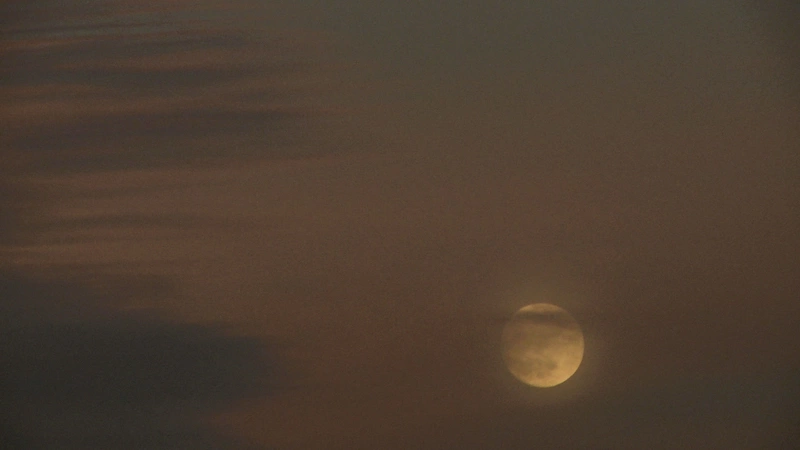
____________
L. Cohen (2017)
‘L. Cohen is a view of an Oregon farm field, observing the passing moon and a sunset, and incorporating a Leonard Cohen song.’ — MUBI
the entirety
_________
Readers (2017)
‘Unlike smoking a cigarette, reading a book isn’t among those things that are generally regarded as a part of social communication. In the ideal case, reading can rather become an oblivious act, and this is precisely where the great American documentary filmmaker James Benning struck gold in his most recent film. READERS observes four people, three women of different ages and a man, while they are reading. Every take lasts 27 minutes, filmed as a medium shot and in central perspective. Except for an insert at the end of each episode, featuring the title of the book and a quotation from it, there is no further information.’ — Viennale
A speculative video essay on the film READERS by James Benning
____________
Measuring Change (2016)
‘Towards the end of 2015, James Benning made one of his occasional expeditions to Utah, to the place where Robert Smithson’s colossal land-sculpture Spiral Jetty (1970) extends out into the Great Salt Lake. The water-level was low, leaving the vast bulk of the Jetty exposed in the crisp air. His film measuring change captures two thirty-minute periods of that particular day, in the unblinking, unmoving takes that have become his trademark––beginning at 8:57am and 3:12pm respectively. A belated digital companion piece to his 16mm masterpiece casting a glance (2007), this new film hypnotically contemplates Smithson’s art-work in relation to its wider environment and to the humans who walk on and around its gargantuan coils.’ — Letterboxd
the entirety
____________
Natural History (2013)
‘Anyone who lets artist and filmmaker James Benning into a museum knows that it’s not going to result in an action film. In his career that spans 40 years, this time Benning focuses his camera on the Natural History Museum in Vienna. With an eye for colour, lines and composition, he keeps filming a generally unseen spot or detail in the museum: a cellar corridor with piping and anonymous doors, the vast foyer, an office with a ticking clock, all kinds of stuffed animals – foxes, polar bears, butterflies and rows of beetles on pins. But also fish in formaldehyde, rocks and the occasional book. Sometimes briefly and sometimes for minutes at a time, he focuses on an object or still-life, with background sounds – voices, squeaking planks, soft hammering – as the soundtrack. Together, the images form an unorthodox portrait of a place where the history of life has come to a standstill and yet lives on, and where the viewer is given plenty of room to reflect on that.’ — IFFR
the entirety
____________
One Way Boogie Woogie 2012 (2012)
‘In late May of 2011 I returned to Milwaukee to make a third version of One Way Boogie Woogie. This one was shot with a Sony HD camera. For this second re-make I decided to go back to the original idea, that is, to simply document the architecture in Milwaukee’s industrial valley. I searched for buildings that looked like the ones from 1977. I found 18 of them. A few of them are also in the original 1977 film, and the others look as if they could have been. I then decided to shoot each of these building for five minutes. I felt a longer duration was necessary to study their true presence. During filming a few fortuitous events occurred that reminded me of the constructed minimal narratives of the original film, so I decided to add one constructed narrative (myself as the actor) to this latest film, ONE WAY BOOGIE WOOGIE 2012.’— James Benning
the entirety
________
Easy Rider (2012)
‘James Benning’s Easy Rider is a re-creation of Dennis Hopper’s 1969 classic film by the same name. For his 2012 film, Benning drove across the United States and re-filmed scenes in their original locations, raising questions about the legacy of 1960s counterculture in America’s landscape today.’ — Whitney Museum of American Art
the entirety
_________
Faces (2011)
‘In its notes on the series James Benning: New Work, the Museum calls his Faces an “unexpected venture into the world of ‘found footage’ filmmaking.” As Benning explains, albeit in German at the Museum’s site, he’s reconstructed Cassavetes’s Faces in such a way that 1) it’s comprised entirely of shots of single faces, 2) each actor and actress is on screen as long as he or she is in the original and 3) each scene is exactly as long as it is in the original. So, to take Benning’s example, if a scene lasts half an hour and Gena Rowlands is in that scene half the time, then we will see Rowlands for 15 minutes and then the other two characters in that scene. This reconstruction, he notes, remains steadfastly true to its title.’ — mubi
Excerpt
_________
20 Cigarettes (2011)
‘James Benning is known for his work chronicling landscapes, with people often being absent or confined to the margins of his work. Twenty Cigarettes however brings people to the centre. Benning structures the film by asking each of the twenty participants to smoke a cigarette, each shot lasts as long as it takes for this to happen. The smokers are therefore controlling duration and the cinematic frame through the choices they make in how they are going to move through the frame. The twenty participants are all friends of Benning and include the film maker Sharon Lockhart. benning provides us with not only space but also time to be aware of our own viewing, the self consciousness of the smokers on film only being mirrored by that of the viewer.’ — AVFestival
the entire film
James Benning answers questions about ’20 Cigarettes’
_______
Two Cabins (2011)
‘Benning reconstructed Henry David Thoreau’s and Ted Kaczynski’s iconic cabins, and uses these structures to reflect on utopian and dystopian versions of social isolation. Mounted on the walls of each cabin are copies of paintings by so-called outsider artists, also made by Benning. On the surface Benning’s two cabins are night and day, invoking contradictory sets of reclusive intentions and divergent paths leading back out. Deeper inquiry reveals the Thoreau / Kaczynski equation to be inspired. Benning’s engagement makes discernable a multitude of contacts between their motivations, beliefs, and experiences of seclusion. Benning’s armature artfully unfolds a complex articulation of practices of dissent, nonprescriptive ways of living, and the politics of solitude.’ — motto distribution
the entire film
_______
Small Roads (2011)
‘The first 12 shots, set in the Golden State (where Benning lives and teaches, at CalArts), shift almost imperceptibly from the Pacific coast to the parched environs of Trona. A shot with saguaro trees immediately signals a shift to Arizona, underlined by two speeding border-patrol vehicles that suddenly rush past the camera. A view of New Mexico’s White Sands offers a startling contrast of white horizon and azure sky, while a subsequent string of shots through the South and Midwest (including Texas, Missouri, Mississippi, Arkansas, Louisiana, Illinois and Wisconsin) allow Benning to explore the textures and moods of lush forests, the contrasts between hills and flatlands on either sides of certain roads and the volatile changeability of weather. Radically non-narrative though it may be, Benning’s work elicits profound states of meditation and involvement; “Small Roads” can perhaps be seen as the product of what happens when a motorcycling filmmaker, which Benning is, gets out on the remote blacktop. Less clear is how the helmer, in the course of shifting from 16mm to digital, manipulates his shots, increasing or decreasing colors, contrasts and even the speed of movements; pic’s masterful control of tech elements is the result of a thoroughgoing embrace of digital’s visual and audio capabilities.’ — Variety
the entirety
________
Pig Iron (2010)
‘James Benning’s Pig Iron is a 30 minute dramatic narrative. Iron ore is super heated in a blast furnace to make pig iron, which in turn is used to produce steel. The making of steel is a continuous process.’ — MUBI
the entirety
____
Ruhr (2009)
‘Ruhr is Benning’s second HD work after the minute-long Viennale trailer Fire & Rain, a corner he seems to have been forced into (by declining standards in 16mm lab work and projection), but one as exciting as it may be disquieting. Here: seven shots in two hours (ranging from 7 to 60 minutes); no restrictions imposed on duration by the length of film reels, or an obligation to heed the camera’s ontological impression of reality. Ruhr severs, for the first time in Benning’s work, the shot’s temporal relationship between what was there and what’s projected, in the same way Kiarostami cut up four months of footage into 28 minutes for the final shot of Five (2003). No longer does the canvas merely depict what the traveller saw. Ruhr is perhaps best described, in Mark Peranson’s words, as a “reality-directed document”: a concrete, revelatory study of place, but also an intricate act of betrayal.’ — mubi
Trailer
Excerpt
__
RR (2007)
‘Is RR an observation or a comment, a film of trains or a film about railroading in America? For nearly two hours James Benning is content to sit with his camera and watch trains pass, and the answer is probably all that and quite a bit more. Whatever RR is, the chances are slight that another movie will make it onto a big screen in Los Angeles this year boasting a director-cast relationship (and let’s not hold it against these wonderful players just because they’re made of metal) as perfectly dynamic as what Benning pulls off here. His ensemble is a real murderer’s row: 43 trains of all shapes and sizes, from a slinky Southern coal-hauler that moves across the Tennessee River Bridge like she owns the thing to a little work car that scuds across the frame with Chaplin’s sense of humor. Even better, Benning has the good sense to let them shape the picture: Each shot lasts as long as it takes the train to make its way across the frame, bringing out a triangular relationship between the camera (and its placement), its object and time that not many directors seem to have any use for these days.’ — Phil Coldiron, LA Weekly
the entirety
__________
Casting a Glance (2007)
‘In 1970 Robert Smithson built his iconic Spiral Jetty, a 1,500-foot long sculpture of mud, salt crystals, and rocks jutting into Utah’s Great Salt Lake, embodying elemental and philosophical principles essential to the artist’s aesthetic. Smithson’s film of the same name intercuts footage documenting the Jetty’s construction with sequences in a natural history museum and his own poetic voiceover, the camerawork recapitulating the Jetty’s form in swirling aerial shots, dazzled by the sun’s reflections in the water. Benning first focused his camera on the Jetty when he searched for its remains during the cross-country motorcycle journey at the heart of his 1991 film North on Evers. At the time Benning supposed that “in a way [his] trip [had] ended there at the end of the spiral,” however the coil’s pull persisted – as an important reference in his 1995 film Deseret and then as the subject of casting a glance. Simulating the Jetty’s thirty-seven year history, casting a glance records the shifting ecology of the Great Salt Lake’s north-eastern shore, finding the earthwork “a barometer for a variety of cycles.” Benning has created a work “that [Smithson’s] film begs for, which pays attention to the Jetty over time.” – J.B.’ — Harvard Film Archive
the entirety
______
10 Skies (2004)
‘I thought about the ephemerality of film, of both that which is photographed and the photographs themselves, of the mediums focus on movement over time both physically perceptible (objects in front of the camera) and invisible (changes in emotion, tone, ideas, and other abstractions), united to a degree by the effect of simply photographing clouds in the sky, objects that are so subtly transient as to appear abstract yet can also be so monumentally, physically dominating in the composition. The cut to the next shot—the next sky, a billowing cumulus formation with splotches of hues both too dark and too orange, suggesting roots in a fire somewhere off-camera—was jarring and refreshing, as all other cuts would be. In fact, after the first shot, my principle pleasure of watching Ten Skies comes from the fact that Benning held shots so long that inevitably my attention grew lax, often in tandem with the skys own dissolution as shapes became blurry, moved off-camera, or simply dissipated; my mind wandered and points of reference in the frame became fewer and fewer. So each cut comes as welcome relief: finally, new shapes, colors, and subtle movements to soak in and visually rove around! Banal things like jets passing in the distance or a bird or two arcing across the corner of the frame become wondrous moments of relief towards the later half of each shot as, more often than not, one becomes overwhelmingly used to this section of the sky.’ — J. Ryans
the entire film
Excerpt
______
13 Lakes (2004)
‘13 Lakes is no more than what it promises: thirteen lakes (from across the United States) filmed in identical ten-minute takes. Each is a static composition, framing sky and water in equal measure. None features any human incursion, save the occasional boat, wave runner, automobile, train and, in the Crater Lake sequence, the off-camera sound of gunshots. This is a film where any human imprint is light and vanishing. Benning’s film manifests movement, even if this motion does not facilitate traditional dramatic exposition. In the case of 13 Lakes, the movement depicted calls attention to the moment-to-moment transformation of the natural world. Whether it is the slow drift of cumulus clouds, raindrops falling on a tranquil mere, or a brisk wind sweeping across the surface of the water, the protean quality of the natural world is emphasized. And since the movement being depicted has nothing to do with authorial manipulation, it is motion which cannot be fully circumscribed within the confines of the frame. This is a transformation occurring continually, on- and off-screen. Nevertheless, these transformations are captured by a camera, commensurate with the editorial choices of the filmmaker (both in terms of what is shot and how it is depicted). It is, in other words, a work of art, however minimal it may be in its conception.’ — Senses of Cinema
the entire film
______
Sogobi (2002)
‘I wanted to go back and make a film purely about landscape and the environment. I had two ideas: Id either make all of the shots pure nature with no human traces, or Id add some shots that would slowly refer to human encroachment. Of course, that is what I did in the end. 9 or 10 shots are like that. However, the first shots are of pure wilderness, almost Biblical and then around the tenth shot a fire helicopter enters from the top of the frame, invading the space both in picture and sound, a helicopter coming from top, kind of like God, dipping down.’ — James Benning
the entirety
_________
Four Corners (1998)
‘“Four Corners” idiosyncratically uses scrolled thumbnail bios and a single representative canvas from four visual artists (Claude Monet, Alabaman primitivist Moses Tolliver, a Native American canyon-wall conjecturally born in 142 A.D., and Jasper Johns) as “chapter headings” that kick off separate segments of precisely 13 shots investing one location each. Three are sites near the titular New Mexico, Arizona, Colorado and Utah intersection, their variously decades — or centuries — spanning voiceover sagas invariably dealing with the tragic impact that ill weather, Spanish conquest, intertribal conflict, the U.S. government and/or latter-day poverty and alcoholism has had on Indian tribal survival. The fourth place is the Milwaukee neighborhood where Benning was raised amid working class German-Americans; now it is a grim African-American ghetto where one prolonged shot of juvenile b-ball players briefly shows a drive-by shooting in the background. All these shards of complex information are very cleanly laid out, albeit with little relation to conventional overall narrative structuring or overt, subjective thesis-making. Nevertheless, pic ultimately conveys a good deal more about the disposability of life and cultural tradition in U.S. history than many more hectoring docus.’ — Variety
the entirety
_____
Deseret (1995)
‘One of the main characteristics of experimental films is that they tend to make hash of the terms we use to speak about narrative features, and James Benning’s haunting, beautiful, and awesome Deseret (1995) — his eighth feature-length film — performs this valuable function from the outset. To say that Deseret is “directed” and “written” by Benning requires some bending of the categories. He “directed” it insofar as he conceived the project, filmed the images, recorded the sound, and edited the sound and images; he “wrote” it insofar as he compiled and edited the texts that are read offscreen by Fred Gardner, though he didn’t write them. Broadly speaking, Deseret — whose title refers to the name the territory of Utah originally proposed for itself when campaigning for statehood in the 1860s (it joined the union as Utah in 1896) — consists of the subtle, artful, and complex interface of the condensed news stories, the recorded sounds, and several hundred stationary shots. Each shot generally corresponds to a sentence in the narration, the only exception being that each of the film’s 93 segments begins without narration; the narration of a news story always begins with the second shot, on the lower portion of which is superimposed the story’s date.’ — Jonathan Rosenbaum
the entirety
______________
Landscape Suicide (1986)
‘Landscape Suicide is a symmetric film. Between the five minute long prologue and epilogue, the last three “set pieces” of the film mirror the first three. While the Protti section is followed by the landscape montage and the household sequence, the Ed Gein section is preceded by them. In a way, Landscape Suicide also acts as an examination of the narrative property of cinema. We are first given Protti’s version of what happened verbally and then the images of the locations they took place in. One is thus able to situate the now-coherent account into its proper geographical location and conjure up, more concretely, the visual equivalent of Protti’s account. On the other hand, the locations of the incident are given before the oral account in the case of the Gein murder. In this case, one tries to reconstruct the incident by simulating the events being described within the locations already familiar. Benning resolves the “how” of the incident into “what” and “where” and asks us to put them back together to find out “why”. In essence, Benning divorces genre cinema from its exploitative nature by splitting up its action into words and locations. With some effort, one should be able to stitch up all the elements of Benning’s film to obtain a teen-slasher and a psychological thriller.’ — The Seventh Art
the entirety
_________
Grand Opera (1978)
‘A transitional film at the end of his first decade of filmmaking, James Benning’s Grand Opera introduces a degree of storytelling to his previously more formalist devices. Benning calls the film his “first attempt at writing my own kind of history” and, in a sense, it also serves to write himself into history, acutely measuring his place as a Midwestern experimental filmmaker, then based in Oklahoma, in relationship to the avant-garde scene situated in New York. The film thus features homages to the prominent experimental cinema of the time, including a spoof of Wavelength, as well as cameos from Michael Snow, Hollis Frampton and Yvonne Rainer. Woven with these sequences are other characteristic Benning gambits – a compilation of every house he ever lived in, a preoccupation with the history of Pi, and the looming threat that a building will explode.’ — Early Monthly Segments
Excerpt
Excerpt
_____
One Way Boogie Woogie (1977)
‘In 1977, concerned about the decaying nature of his native Milwaukee, filmmaker James Benning shot One Way Boogie Woogie, an hour long film composed of 60 shots of industrial urban landscape: smokestacks, sidewalks, three Volkswagens, people few and far between, an animal here and there. In characteristic fashion, Benning’s apparently simple, static shots are exercises in meticulous painterly composition, and their careful sequencing ensures that the director’s playful humour is given full expression. His most well-known film, Boogie Woogie was canonized as one of the definitive structuralist films – a surprisingly personal, affecting work from one of America’s most revered experimental filmmakers. Presented along with Boogie Woogie is 27 Years Later, in which Benning revisits his earlier masterwork in a characteristically unique manner. For 27 Years Later, Benning returned to Milwaukee to shoot ‘the same film again’. The shot by shot re-staging uses very obviously different stock – the colours are brighter, there’s a distinctly modern tone. Buildings are showing their age, or gone; people likewise. Seen together, these two films offer a cogent illustration of how America has changed in the intervening years, fraying in places, gentrified in others. Benning’s method, and his affinity with his subjects is extraordinary – as if he completely absorbs the landscape, imbues it with geo-political and cultural relevance, and re-presents it to us in a striking mix of formal rigour and mischievous invention. Since premiering to great acclaim at festivals around the world, the two films have been screened together, offering audiences a fascinating, unique experience of change and progress in America.’ — Film Studies Center
the entire film
____________
11 x 14 (1977)
‘A structural investigation of North American culture analysing life and motion through space and time. Benning’s precision and geometrically insightful eye construct an expansively mysterious and disconcertingly affecting portrait of american midwest while encrypting a novelesque story in its sidelines. One of the most beautiful films ever made.’ — Diogo Serafim
the entirety
____________
w/ Bette Gordon The United States of America (1975)
‘In 1975, James Benning and Bette Gordon, two graduate students at the University of Wisconsin–Madison, took a pair of road trips to New York and Los Angeles. With a 16mm camera mounted in the back seat of their car, they intermittently filmed their journeys, capturing images of the American landscape as news broadcasts and Top 40 radio hits drifted from the speakers. The resulting 27-minute film, titled The United States of America, was Benning and Gordon’s third and final joint directorial effort; not long after, Benning would release his twin landmarks One Way Boogie Woogie and 11 x 14 (both 1977), positioning him at the forefront of the American structuralist cinema movement, while Gordon would pursue the narrative route and eventually direct the influential independent feature Variety (1983).’ — Film Comment
the entirety
*
p.s. Hey. ** Dominik, Hi!!! I think several countries’ entire armed forces wielding horn-chainsaws would do the trick. Yeah, I hate money and wealth and all of that, but when you’re scrambling for the money necessary to do your art work, it’s amazing what that does your hatred. Mark Dirt ain’t bad, it’s true. Love making life fair, G. ** Dee Kilroy, Ha ha, thank you. Yeah, I don’t like Anselm Kiefer’s work. *ducks* The actual video of the Richard Serra/Philip Glass joint is really cool, but it’s not online. Greenaway’s Vermeer pic ‘A Zed and Two Noughts’ is by far my favorite thing of his. Although these very early videos about weather that he made for the BBC are pretty cool too. Where did your weekend lead you? ** Charalampos, It’s more like psychedelics slow your brain down in a weird way. Nice day there. And I say that as someone who likes beaches at night. Yes, a bunch of older posts have been wrecked by whatever forces. That’s one of the reasons I restore them here every few days when I can. I’ll look into what it would take to get that particular post back in action. Thanks! Love from super quiet Paris. ** _Black_Acrylic, Hi. Err, I’m afraid I’m in the camp that thinks Yoko is the Deepak Chopra of Fluxus *ducks* but what can you do? ** David Ehrenstein, Oh, yeah that Bobby Driscoll film. I need to rewatch that. Cool. Thanks! ** T. J., Well, you were the first one to vocalise it, but … yes. That Sierra piece is so great. How I wish I could see (and smell) it in color. How’s stuff, dude? ** Isabella, Oh, hi! I’m happy you came back! The film you’re working on sounds super exciting, and, yes, excitingly ambitious. I make films with Zac Farley, and one of our rules is that we only want to make films that seem like the ability to make them exceeds our abilities and skills. We certainly did that with the one we’re editing now, but we just decided we were going to make it work, and I think we really have. As I’m sure will be the case with your film too. It’s so exciting, no? To use making your art a way to grow your abilities. It sounds great! The way you think about your work and how your process works and what you love about film as a medium has a lot in common with how I do things and am thinking about film these days. It’s such a big, voluminous area to work in. So is fiction, actually, but actually trying to visualise your imagination is really fascinating, especially when you’re used to just having words to work with like me. So I do definitely understand, or at least I think/hope I do. Thank you a lot for letting me have a look at your film! That’s great! I’ll watch it this weekend. Really thanks so much. I really look forward to it. I hope your weekend builds you whatever you want. xo. ** Mark, Hi. Ooh, Club 33, swank. Yeah, I grew up going to Disneyland multiple times every year since I was teeny. I may try to bribe you one day to recreate your Disney walking tour for me if you have a price. I still adore Disneyland, but Mickey Mouse never did much of anything for me. Goofy was okay. Wow, what a fascinating backstory about Delos. Now I want to go there. In the winter, though. Updates would be amazing, obviously. Me too: I saw Burden’s piece at the Geffen as well. He’s a great favorite artist of mine too. I was a kind of a visiting teacher in the UCLA Fine Arts Department for a few years at the same time he was one of the professors, so I got to interact with him a bit. What a strange fella he was. Great strange. Best weekend to you, Mark. ** Cody Goodnight, Hi. I’m pretty out of sorts, but no worries. His Einstürzende Neubauten film is really good. If you like them, you’ll like it. Sadly I think Fleischer may be just a little too adventurous and daring for mass appreciation. It’s a sad and confusing world we live in that wants to play it safe even with art. But there we go. ‘Ice’ is great! What a good score. I do like Talk Talk, yes. Awesome. ‘Lucifer Sam’ is one of the handful of greatest songs ever in my opinion. And ‘Phenomenal Cat’ is way up there too. Having a great day will be a challenge for me, but, you know what, I’m going to try. I hope your weekend is breezily great. ** Steve Erickson, Unpopular opinion, but I think Yoko made very interesting visual work for a while, including when she was with Lennon, but the visual work she’s making for the past, oh, twenty years, maybe more, is utterly banal. Well, I loved that video I clicked on. It was crazed. Thank you! I have an enormous amount of shit to deal with this weekend, so I’m going to deal with that and hopefully see some friends in the breathing spaces. How did yours treat you? ** Damien Arkfeld, Hey there! So good to see you! I wonder if there’s a way to monetise the ability to spot a necrophile in 10 seconds. Probably not, sadly. Dude, that living situation sounds … not good, to put it mildly. Sorry. I know grief, for sure. I know its overwhelming and never ending power. So I probably understand yours to the degree another person can maybe? Fantastic about the second book! October, wow, great! Hope you get to go to that Book Festival. It does sound awfully conducive. And to Paris at some point, naturally. Awfully nice here, as I always say. You take really good care of yourself, my friend. I hope peace and love target you too. ** Okay. I have decided to restore and expand this Day about James Benning, easily among my two or three favorite all-time filmmakers and someone whose work is a huge influence on the films Zac and I make. I hope you find things therein that seem special to you. See you on Monday.




 Now available in North America
Now available in North America 
Hi!!
Agreed. I absolutely hate having to think about money – how our lives are built around having or not having it. I genuinely don’t wish to be the kind of wealthy like that portrayed in “Succession.” I just want to have enough so that I don’t have to think about whether I can do or create or buy something I want. That’d align with love’s effort to make life fair quite perfectly, no?
Love making raindrops quietly hum the theme song of “The Smurfs” as they fall, Od.
Things are fine. LANDSCAPE SUICIDE has an even more interesting use of the song ”Tennessee Waltz” than in ZABRISKIE POINT. I’m got really into Model Home who I was unfamiliar prior to hearing them on the most recent Wolf Eyes album but I put all their stuff on a Spotify playlist (9 hours) and it’s all I’m listening to.
Beach at night? I love it at night too. Does it inspire you more at night? I love sea and beach in general. I went again today and will go again tomorrow with my notebooks to write and draw. I started writing my poetic memoir called SELF-MADE. I open thread to one two years from now when I will be telling you it’s done and ready for release 😉
I listen to music like Ayumi Hamasaki to find rhythms that inspire me for writing. Sometimes when I listen to music I get inspired about how lines flow, like cyclical melodies in songs for example are highly inspiring but it’s hard to explain these things
Lucifer Sam is amazing song I actually did a automatic drawing inspired by this song and I love it so much!
It will be so cool if you restore the Dennis Cooper Papers One time I went there to look if there is something of yours but they were closed. It was around the time I was reading your books for the first time <3
Btw I bought the book The present and the past nice Penguin edition from an arcade bookstore with tons of used books around that area and I lost it some days later because I was reading as I walked I am still mad about it and want to buy the same edition again. I also found there the book Edwin Mulhouse and was so pumped to find it out of the blue!
Love to Paris from Crete
I’d be happy to do the Disney tour – my price is simple, lunch at the Tam. We are stoked about Delos. I’m also preparing questions for the oracle at Delphi – hopefully she’s still hanging out there. We are also hoping to see Oedipus at a festival in a 2300 year-old theater. Burden was pivotal for me. I also saw his retrospective at the Newport Harbor Art Museum in 1988 right before I went off to art school. I saw a proof of the zine yesterday – it looks great! We were hanging out with Frank from Altered Innocence last night. He’s coming to Films for Fags tonight. Have a great weekend!
Dennis, Let’s see if this one makes it through.
So, some weirdo updates:
1. Turns out my mom had a bone spur develop and they got it out. She thinks there’s still something there and will get it checked out this week.
2. Last Friday, I ended up in the ER with lymphangitis. Seems some bug or some shit bit me and the infection entered my lymphatic system and I ended up with this big red streak around my upper left bicep. I’ve been on a strong antibiotic since. It’s gotten better.
Man, it’s one thing after afuckingnother. Ugh.
Hope you’re well.
Oh, and my keyboard started typing like 50 letters every time I’d hit one, but I think I’ve got it fixed now. Bleh.
His Dennis – I’d be happy to do the Disney tour – my price is simple, lunch at the Tam. We are stoked about Delos. I’m also preparing questions for the oracle at Delphi – hopefully she’s still hanging out there. We are also hoping to see Oedipus at a festival in a 2300 year-old theater. Burden was pivotal for me. I also saw his retrospective at the Newport Harbor Art Museum in 1988 right before I went off to art school. I saw a proof of the zine yesterday – it looks great! We were hanging out with Frank from Altered Innocence last night. He’s coming to Films for Fags tonight. Have a great weekend!
I had never seen anything by James Benning until this weekend, and I’m very glad for the input. A shame that his films are only viewable for me on my laptop, because a cinema screen would really provide more of an immersive experience. I imagine that being meditative and sacred, potentially.
Hi Dennis.
How are you? I’m doing ok. Always wanted to give Landscape Suicide a try. Would you recommend? I really do like Einstürzende Neubauten, especially Halber Mensch. I agree on Fleischer. Their work won’t click for most people like Disney would. I really do love those songs as well. I hope your days have improved. Nothing much has happened yesterday or today. Listened to more Talk Talk and going to rewatch Pee-wee’s Big Adventure tonight. Want to rewatch The Apple from 1980, as it’s one of the goofiest films I’ve seen. It’s a riot! Going to the dentist tomorrow. Plan to listen to Roxy Music or Prince on the way. Don’t know what I’ll watch tomorrow. Hope you have a great day or night, Dennis!
My weekend went OK. I saw the Spanish film THE BEASTS yesterday. I’m now trying to finish my second draft of a review of the new album by the Armed. It’s an odd album, not always in ways that benefit their music. U2/Smashing Pumpkins producer Alan Moulder mixed it, with an unusual blend of layers of murky guitars and a glossy, heavily compressed sheen.
The Bruxaria Sound label’s Instagram page is a good source for more baile funk party clips. (They have a YouTube channel with only one video.)
I must confess, I’ve been daydreaming about Trent Reznor tied up in bondage in that Closer video, and what it would be like to nine inch nail him 😉
ANYWAYS hahaha! How was your weekend? was it a beautiful one? I like that you said “if I don’t SEE you before Monday,” implying that you’d just happen to run into me on the streets of Paris haha.
Oh yes that boy is a real sweetie. I’m happy that we are friends because he seems really cool. He’s into video games, cosplay and oh my god I just love when trans people aren’t afraid to express themselves fluidly, or anyone really because its just beautiful! I’ve always liked having long hair, like even if I was born originally a boy I would have grown my hair out freely but dysphoria is gay so sometimes in a state of panic I end up chopping it all off because I get afraid people will think I’m a girl. Fuck that though, because im going to grow it out and commit. Like, I don’t even mean shoulder length, I mean all the way down to waist. Joey Jordison style ya know?
I’m drawing a cool picture right now so I’ll get back to that! I must return to the swamps
*submerges beneath the water*
Dear Dennis,
Just askin’, doll. The earthen construction beneath (& around) Kiefer’s former Barjac studio is compelling to me. Sophie Fiennes does a marvelous job quietly documenting the spaces, just moving through the tunnels & digs. I like to put the doc on in the b/g & let it run silent while I sketch, sometimes.
Weekend’s been nice enough. Boyfriend finally landed a gig. The relief! It will be nice to have a couple days off with him. We may head back out to Mt. Arabia, see if we can get some more landscapes. Plus I need more lizards for my photo reference file. That would be a pleasant way to unwind.
Better than what I’m doing right this moment, which is drafting a city map. I do not enjoy architecture. Drafting it, I mean. Architecture’s a friend, I quite admire it, but god. It’s like drawing cars. Unless there are tasty reflective surface to render it’s all unforgivingly technical, and I did *not* get into drawing so I could fuck around with T-squares. Barf.
Made some headway on the Wojnarowicz piece– trying to correctly curve the perspective in an adjoining room so everything through the doorway looks in line with the main p.o.v. The original perspective I’d roughed in made my stomach lurch. Believe I have it now. How Escher had the patience, I cannot conceive. And at engraving, yet.
Tomorrow I will draw some anoles clambering through chainlink. That is a good way to start the week, I think. Ginger tea, and a sketchpad, hopefully not at 5m.
-D